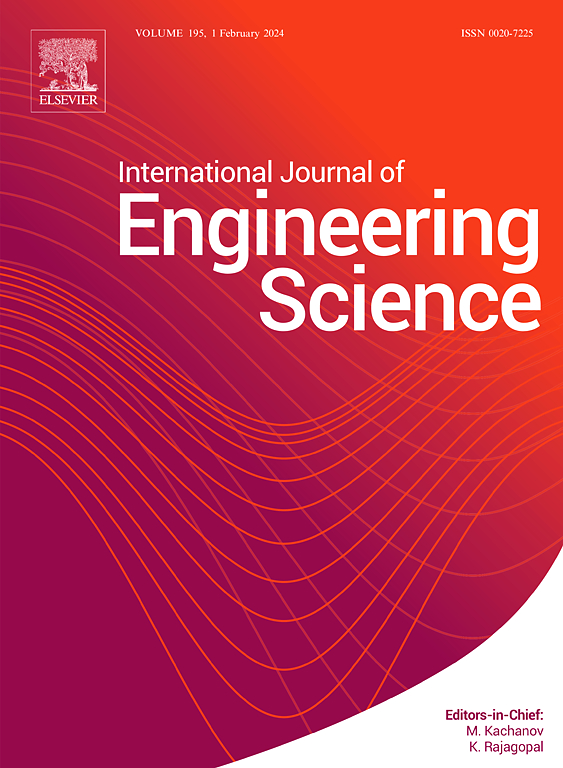由于柔性多孔结构的滚动而引起的波动
IF 5.7
1区 工程技术
Q1 ENGINEERING, MULTIDISCIPLINARY
International Journal of Engineering Science
Pub Date : 2025-07-01
DOI:10.1016/j.ijengsci.2025.104333
引用次数: 0
摘要
本文分析了部分浸没或完全浸没在深水中的柔性多孔薄板的滚动运动对表面波的产生。该板被建模为弹性多孔板或有限长度的拉伸多孔膜。将原半平面物理问题建模为具有高阶结构边界条件的拉普拉斯方程的混合边值问题。为了解决这一问题,通过引入对称函数和积分-微分关系形式的特殊联系,将其分解为一对四分之一平面问题。所涉及的连接将原始溶液电位与刚性和新定义的辅助电位连接起来。后一类问题化为第一类Fredholm积分方程,用伽辽金技术求解。该技术涉及基函数作为简单多项式乘以适当的权函数,其形式由板边缘条件决定。这种方法为辐射波振幅提供了高度精确的封闭边界。给出了数值结果并对其进行了分析,研究了辐射波幅随物理结构参数的变化规律。本文章由计算机程序翻译,如有差异,请以英文原文为准。
Wave motion due to the rolling of flexible porous structures
Generation of surface waves due to the rolling motion of a thin flexible porous plate, either partially immersed or fully submerged in deep water, is analyzed in this study. The plate is modeled as either an elastic porous plate or a tensioned porous membrane of finite length. The original physical problem in the half-plane is modeled as a mixed boundary value problem for the Laplace equation with higher-order structural boundary conditions. To address the problem, it is decomposed into a pair of quarter-plane problems by introducing a symmetric function and a special connection in the form of integro-differential relations. The involved connection links the original solution potentials with rigid and newly defined auxiliary potentials. These latter problems are reduced to Fredholm integral equations of the first kind, which are solved using the Galerkin technique. The technique involves the basis functions as simple polynomials multiplied by appropriate weight functions whose forms are dictated by the plate edge conditions. This methodology yields highly accurate closed bounds for the radiated wave amplitude. Numerical results are presented and analyzed to examine how the radiated wave amplitude varies with different physical and structural parameters.
求助全文
通过发布文献求助,成功后即可免费获取论文全文。
去求助
来源期刊

International Journal of Engineering Science
工程技术-工程:综合
CiteScore
11.80
自引率
16.70%
发文量
86
审稿时长
45 days
期刊介绍:
The International Journal of Engineering Science is not limited to a specific aspect of science and engineering but is instead devoted to a wide range of subfields in the engineering sciences. While it encourages a broad spectrum of contribution in the engineering sciences, its core interest lies in issues concerning material modeling and response. Articles of interdisciplinary nature are particularly welcome.
The primary goal of the new editors is to maintain high quality of publications. There will be a commitment to expediting the time taken for the publication of the papers. The articles that are sent for reviews will have names of the authors deleted with a view towards enhancing the objectivity and fairness of the review process.
Articles that are devoted to the purely mathematical aspects without a discussion of the physical implications of the results or the consideration of specific examples are discouraged. Articles concerning material science should not be limited merely to a description and recording of observations but should contain theoretical or quantitative discussion of the results.
 求助内容:
求助内容: 应助结果提醒方式:
应助结果提醒方式:


